Breaking the Surly Bonds of Earth
Posted September 27, 2020 at 3:19 pm by Tim Dustrude
FREEZER BURNED: Tales of Interior Alaska is a regular column on the San Juan Update written by Steve Ulvi…
Arriving in Interior Alaska in 1974, I was 23 years old and had never been in any kind of airplane. (Well alright, full disclosure; as a kid, I was big on those horses and planes that ate a dime to buck around in front of a grocery store).
After days of mud alternating with billowing dust, cruising along at 45 mph on the unpaved Al Can Highway, we parked at McKay’s Hardware in Anchorage stocking up on stoves, fish nets, ammunition and countless items to enable our dreams of living in the bush.
That day, undecided about where to go, we by chance met Jim, who introduced himself as a young pilot from Fort Yukon. He spread topo maps on the hood of my old pickup and energetically turned our collective compass needle true north to meet with our destiny in the Yukon River country.
 A year later, settled around Eagle, my brother and I were euphoric skimming low in Charlie O’s Piper Tri Pacer looking at cabins along the nearby Seventy Mile River. Soon after, he flew us to an airstrip where we began an ill-conceived, character-building decent of that rock-infested river using a small plastic “two man” raft (maybe two diminutive Chinese fellows). Those memorable first flights in a small plane over vast wilderness, launched an unanticipated, but exhilarating refrain in my life.
A year later, settled around Eagle, my brother and I were euphoric skimming low in Charlie O’s Piper Tri Pacer looking at cabins along the nearby Seventy Mile River. Soon after, he flew us to an airstrip where we began an ill-conceived, character-building decent of that rock-infested river using a small plastic “two man” raft (maybe two diminutive Chinese fellows). Those memorable first flights in a small plane over vast wilderness, launched an unanticipated, but exhilarating refrain in my life.
With the 165-mile Taylor Highway closed through the long winter, the only way to depart Eagle was to fly for an hour and a half or so in a single engine plane. The mail schedule was only three days a week back then. Air North had the federal mail contract from Fairbanks at the time. Some locals called them “Scare North” with raised eyebrows. After a decade of living upriver we moved into the historic town of Eagle where I began a career with the reviled National Park Service helping to start up a newly minted National Preserve the size of Yellowstone Park.
Flying became much more routine as the years unfolded. My broad responsibilities necessitated a lot of time in both planes and helicopters. Later on, for the mind-cleansing exhilaration of it, I paid good money to parachute out of a “perfectly good airplane” (as the joke goes), while in Arizona. As the decades flew by I came to understand that there really are no “perfectly good airplanes” and that exceptional bush pilots were few.
This fall season is a very busy, statistically dangerous time of the year for flying in Alaska. The dynamic of colder, wetter weather swirling across a huge, varied landscape and people’s dreams of fall hunting and fishing trips entirely dependent upon airplanes, can be a volatile mix. Throw in money, pilot bravado, mechanical hobgoblins, geographic distance and “it won’t happen to me” delusion and the potential for tragic outcomes grows.
Perhaps as much as anywhere, Alaska’s state phrase (if there was one) would be “Necessity is the Mother of Invention in Getting Around”. Transportation and enterprise in bush Alaska have always been extraordinarily challenging and fraught with difficulty. The dawn of regularly scheduled flights in the 1950s connected far flung communities and quickly lead to the demise of hundreds of sternwheelers plying major rivers, heroic carriers of mail by horse, dog team and boat and countless affiliated jobs. Aviation created an urban-centered lifeline to the larger world for hundreds of small, third world communities scattered across the watery landscape of the subcontinent of Alaska.
Early aviators in the north faced massive challenges. Few airports were improved as they are now, there was little weather forecasting except for what could deduced peering out the window, the technology of navigation was elemental, and importantly, there was little to no oversight or certification of pilot skills and plane air worthiness. It was called ‘flying by the seat of your pants’ for good reason. A butt strapped to a thin canvas, metal framed seat revealed a lot to a pilot about the plane’s attitude, turn rate and elevation gain or loss in limited visibility conditions where other senses can be distorted.
Each flight in the differing weather and landscapes of the six distinct physiographic regions across the state was often a pretty raw adventure, whether passengers fully realized it or not. Sometimes it is best to remain blissfully ignorant of things far beyond your control. Which in a plane is, well, everything. Beyond that, a successful ‘bush pilot’ has always been a special breed of aviator: doing a lot of the mechanics, dealing with extreme cold and great distance, hauling weird cargo and being on the leading edge of searches for missing Alaskans.
The hackneyed saying that “there are old pilots and bold pilots but few old, bold pilots” probably generally applied back in the days of pioneer aviation but honest-to-god Alaska bush pilots are by definition, bold. We came to know many low flight hour, small plane owners who used their planes like we employ a pickup truck. They sometimes lived in, and often flew over the bush alright, but for my money, that does not come close to earning them the respect and informal sobriquet of Bush Pilot. The incredible tales of many infamous Alaskan pioneer aviators who helped found the State stand unequaled, given the lack of reliable technology, and are lionized in numerous books. The explosion of climbing parties on Mt McKinley (later renamed Denali) in the 1960s, necessitated flying operations focusing on glacier landings and extractions by ski-equipped planes, where some pilots became legends nearly as big as the mountain itself.
From a practical perspective, as a person with hundreds of small plane flights in Alaska as a passenger; a skilled bush pilot has necessarily logged thousands of hours in high performance, short take off/landing (STOL) aircraft, regularly lands on unimproved airstrips and often on gravel bars, beaches, crevasse-lined glaciers, tundra edges or ridge tops where few recreational pilots would ever dare. Some also operated float equipped planes to land on lakes, sloughs and rivers. All switched to skis or ski-wheels in the Interior when our off-airport world was frozen.
The best pilots became one with their aircraft, cyborg-like, in demanding operations again and again. We mourned their crack-ups and violent deaths much too often over three and a half decades in a state with more planes per capita than almost anywhere in the world. The following vignettes are just a few examples.
Jim, whom we met in the Anchorage parking lot in 1974, as well as his brother, both died in plane crashes working out of Fort Yukon years later.
A few years after Charlie O took us on those first flights, he and his wife impacted the rocky slope on final approach into a sheep hunting camp in the Brooks Range, leaving three young kids orphaned.
An airplane mechanic and his hunting partner crashed and burned on the tundra after a catastrophic failure in losing a wing surface panel while flying low scouting caribou.
A friend who had flown to our bush homestead on the Yukon River with charter pilots many times in order to deliver home schooling materials, suffered an engine failure just after take-off in his personal plane and fatally impacted the trees in his hometown of Tok.
A fellow who bent up his airplane twice trying to land on gravel bars near cabins of friends on the Yukon River, became known locally as the “Walking Pilot”. After the second mishap he somehow lost his shoes so had to walk barefoot over miles of rough ground and on rocky shores, and up and over cliffs to get back to town, resulting in his feet being painfully lacerated and bruised.
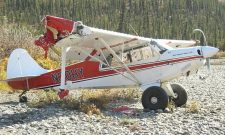 Mark, a highly skilled local bush pilot and friend, flew my young daughter and I into a very small gravel bar at the treeless headwaters of the Seventy Mile River for a fall caribou hunt. However, when he came back in for us he bounced and braked hard flipping the Super Cub onto its back, curling the prop tips in the process. He spent the night tented with us while his wife and mine worried when he didn’t come home. The next day the Park Service helicopter found us and flipped the plane back onto its gear. Eventually, he was able to fly back in with a helpful Cub owner, wire the busted windshield together, bolt on a new prop, crank it up and fly it gingerly 50 miles home “on a wing and a prayer”.
Mark, a highly skilled local bush pilot and friend, flew my young daughter and I into a very small gravel bar at the treeless headwaters of the Seventy Mile River for a fall caribou hunt. However, when he came back in for us he bounced and braked hard flipping the Super Cub onto its back, curling the prop tips in the process. He spent the night tented with us while his wife and mine worried when he didn’t come home. The next day the Park Service helicopter found us and flipped the plane back onto its gear. Eventually, he was able to fly back in with a helpful Cub owner, wire the busted windshield together, bolt on a new prop, crank it up and fly it gingerly 50 miles home “on a wing and a prayer”.
A long-time bush pilot and remote Brooks Range lodge owner of my acquaintance, took off from his lake in his Cessna on floats as he had countless times, to stall and plunge to his death in the lake.
Ephraim took off uphill on the grass strip in Eagle headed out to his remote cabin. Unable to gain enough altitude, he crashed into thick trees totaling his small plane, but walked away unscathed.
A number of acquaintances who were charter or government pilots or backseat observers (as I was), died in Super Cub crashes flying low and slow in tight terrain, marginal weather, or both while surveying moose or tracking wolf packs during the winter.
A notorious State Fish and Game area biologist flying with a highly experienced pilot crashed while aerially gunning wolves from a Super Cub in the 40 Mile Country suffering broken bones and minus 40F temperatures while hunkered at the wreck for over two days awaiting rescue. Back in the 1950s and 60s, while there was a bounty on wolves, springtime brought derby-like gatherings of dozens of small planes and the inevitable shotgun blasts into props, crashes and issues with retrieving wolf ears or hides. Polar bear hunting on the arctic ice off Alaska by airplane was still legal at that time and you can imagine some of the consequences involved in that undertaking.
Roger, a highly experienced pilot with a customized Cessna 185, had great notoriety for countless flights year around in the eastern Brooks Range and northern Interior, enabling river trips, hunters, and homesteaders until he and his plane went missing. He was on his way over the mountain fastness of the Brooks Range, looking for an open pass to pick up some summer river clients in vast terrain he knew like the back of his hand, when severe icing caused him to crash and perish.
These few, mostly sad, but real stories are best considered in the full scope of some of the daunting challenges involved in day in and day out bush flying.
Keeping an airplane operating in extremely cold temperatures necessitated a whole additional range of tasks; draining warm oil and keeping it warm to pour back in, wing covers to prevent frost build-up, insulated cowl covers to trap engine heat, preventing skis from freezing down, defrosting windshields, gingerly shutting doors to prevent plexiglass from shattering and employing an array of portable heaters capable of preheating the engine without electricity.
When airdropping stuff, while the pilot flew as slow and low as they dared, things can go wrong. Some of the worst outcomes are important notes or goods never found (despite folks on the ground seeing the stuff come out of the plane), items impacting trees or rocks that destroy and scatter needed supplies, sending a hefty bag of something like dogfood through a cabin roof or getting a make-shift parachute tangled on the plane’s tail. Of course, the best outcomes were badly needed medical supplies, machine parts, mail or food getting to folks in the middle of nowhere.
Pilots, even highly skilled bush pilots, are sometimes involved in nefarious activities like smuggling, flying booze into dry villages, illegal hunting and complex schemes to take trophy animals out of season or from protected areas for clients with deep pockets. There are many good reads describing some of the most notorious bandits and the dicey undercover operations to catch them. Many fine airplanes were confiscated by the feds (if they weren’t torched by the busted owners) for government use as a result. Some flew in to trap furbearers in areas claimed by trappers on the ground and were shot at or had wire stretched between trees, just off the ground to entangle or wreck intruding airplanes
Some pilots of extensive experience tested the limits of their aircraft and personal skills by strapping canoes, small boats, sheets of plywood, mattresses or metal roofing to struts or floats. Many a cabin on remote lakeshores were built piece by piece, flight by flight, in this way. Some nimrod pilots, with great ingenuity and patience, disassembled small bulldozers and other machines, to fly them in parts to be reassembled at remote gold claims, lodges or cabins.
Landing in tight places on ridges or at elevation to encamp hunters is one thing but taking off in shifting winds and clouds fully loaded with meat and antlers, followed by the hunters and gear is a whole different ballgame. Guy, who had hunted Polar bears with his Cub and who claimed to have invented tundra tires in LA, used to push all the edges on the Canadian border that cut across the Ogilvy Mountains just north of Eagle. He put in sheep hunters on the US side while landing on the Canadian side or vice versa, depending on the wind. He commonly placed large rocks at the end of his take off zone in order to bounce into the air with maximum loads to gain airspeed down the slope at full power.
With the explosive popularity of regional dog racing came the need to transport entire dog teams, food and sleds in charter aircraft. Pilots were known to cut the power to create a moment of weightlessness to stop fighting tangles of stressed out huskies before the advent better practices and bags for each dog (that also constrained strong odors and messy cleanup after such flights).
Then there are the stories of the transport of dangerous prisoners, drunks, women giving birth, hazardous substances, corpses (sometimes frozen in odd shapes) and even animals like wild caribou that have been drugged for capture but regained consciousness in the back of a plane while in flight…well, I think that you get the picture.
You can support the San Juan Update by doing business with our loyal advertisers, and by making a one-time contribution or a recurring donation.
Categories: Freezer Burned, People










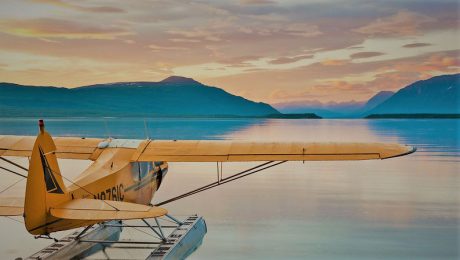
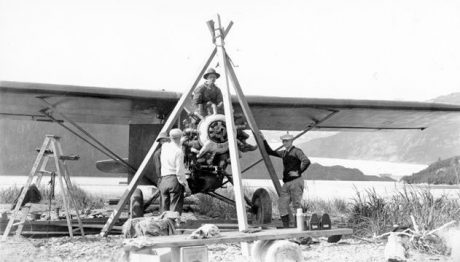
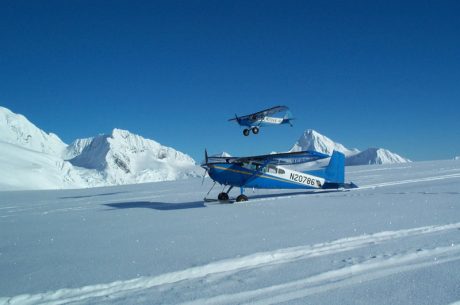
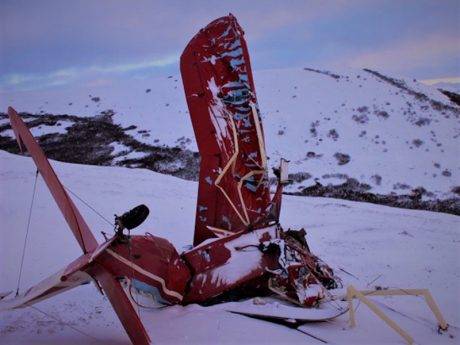
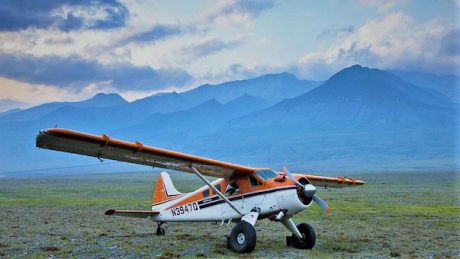
No comments yet. Be the first!
By submitting a comment you grant the San Juan Update a perpetual license to reproduce your words and name/web site in attribution. Inappropriate, irrelevant and contentious comments may not be published at an admin's discretion. Your email is used for verification purposes only, it will never be shared.